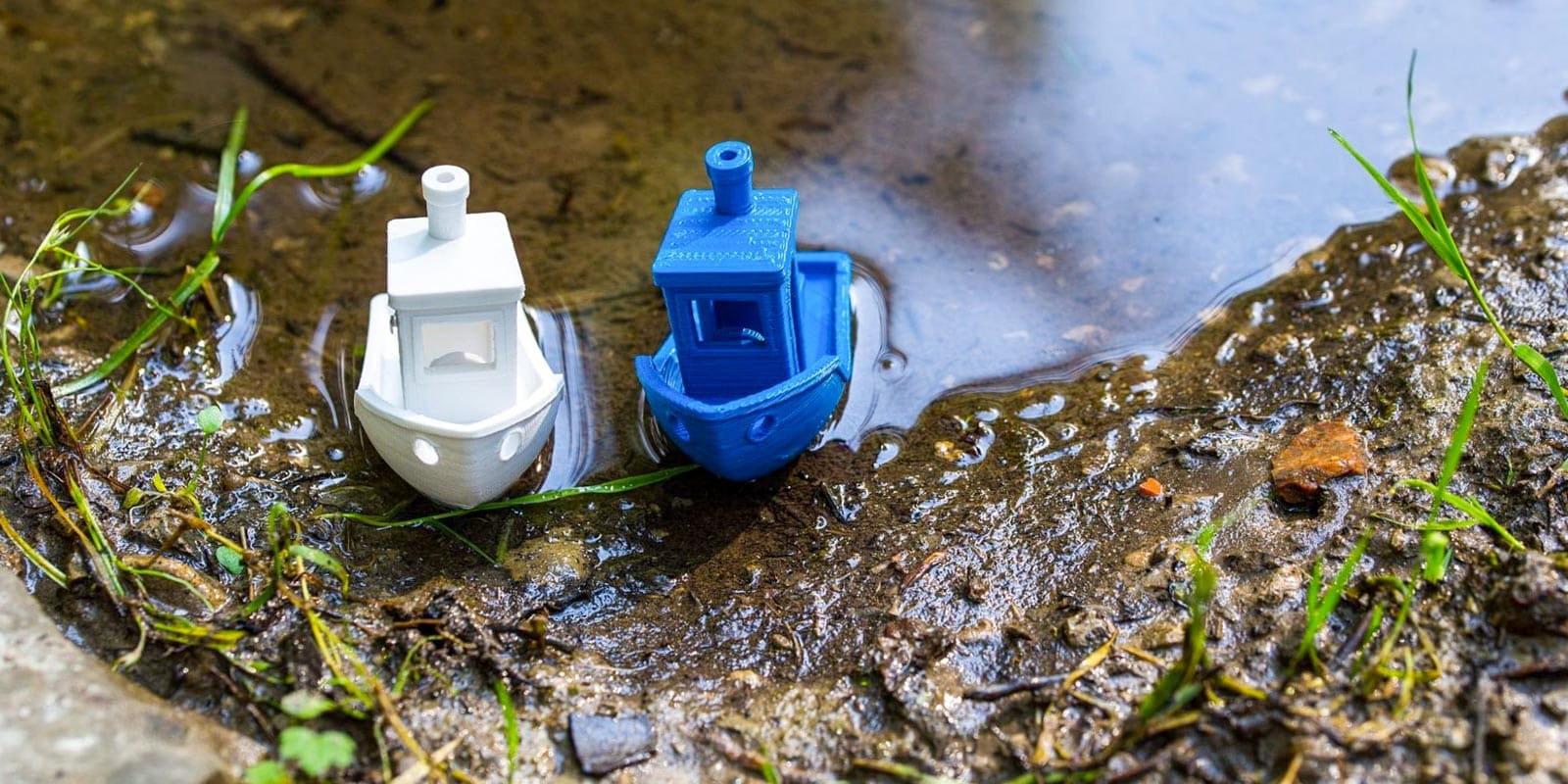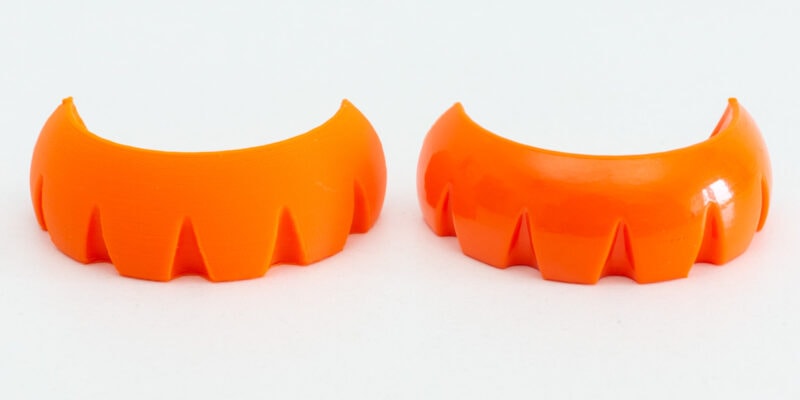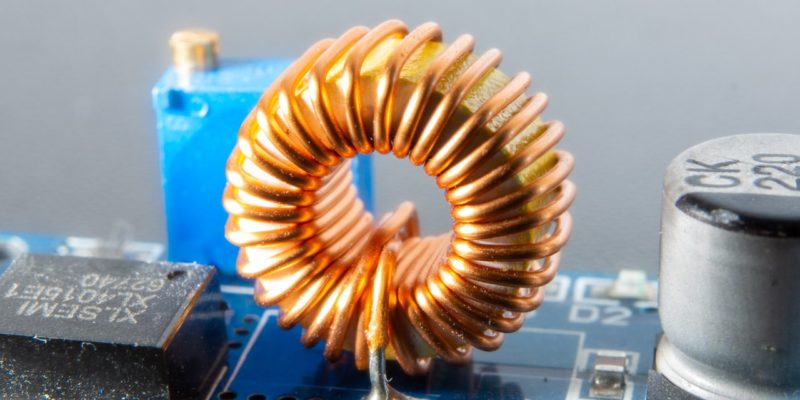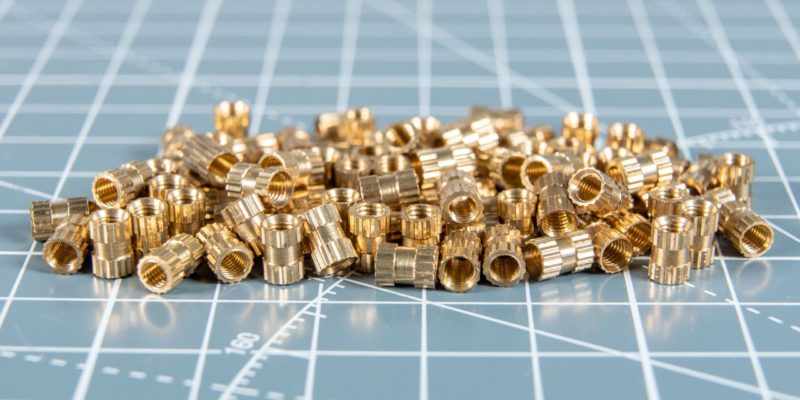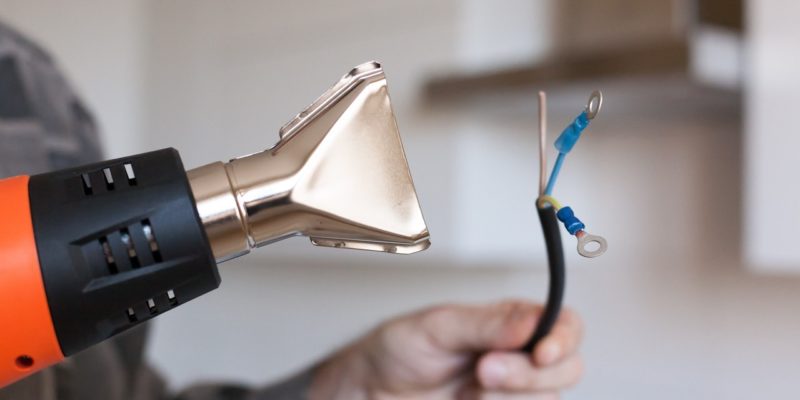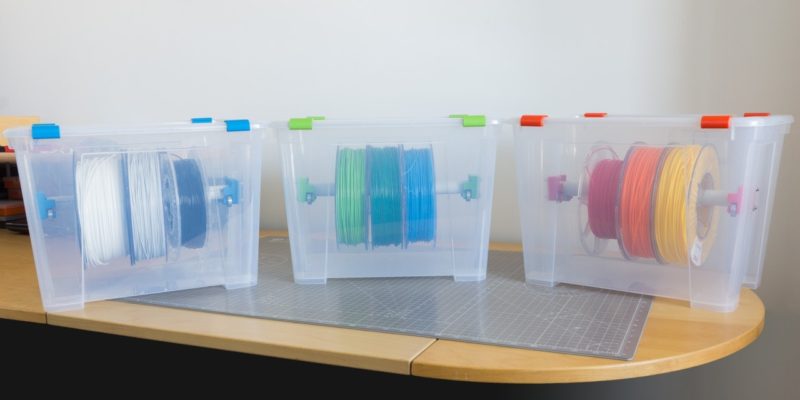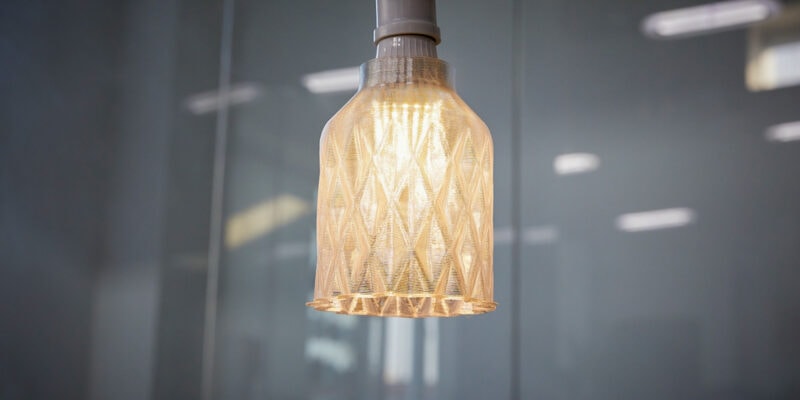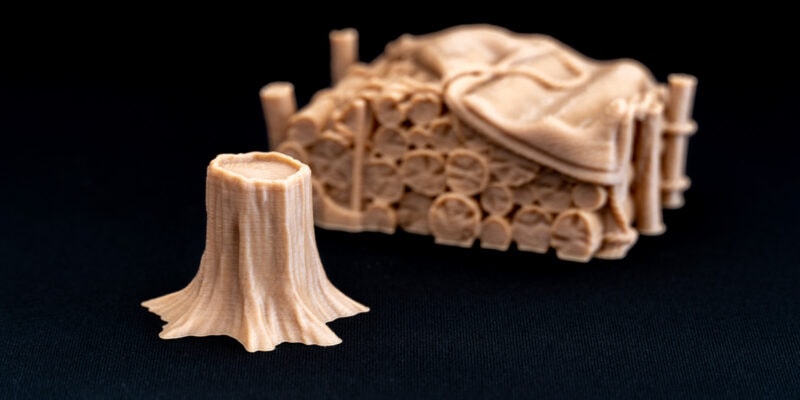Did you leave a spool of 3D printing filament out in the open? Or maybe you’re trying to print with a filament that’s a bit past its prime. Either way, you’ve got a moisture problem and you need to solve it, stat.
Lucky for you, drying filament is pretty easy once you know how to do it.
Let’s take a look at what filament drying tools you’ll need to get your filament printing like new, what settings to use for different materials, and some tips and tricks for getting good results.
Understanding Moisture Absorption in Filament
All thermoplastic filaments are at least somewhat hygroscopic, meaning they absorb moisture from the surrounding air. ABS, Nylon, PVA, PETG, TPU, PC, PLA, and other filaments can have serious print quality issues when they have absorbed moisture.
Wet filaments can cause everything from poor adhesion to under-extrusion to weak prints. They can also damage your 3D printer during the extrusion process, which is why some users dry those filaments regularly.
Some filaments are more sensitive to moisture than others. PVA, TPU, and Nylon are highly hygroscopic, while ABS, PETG, PLA, and PC have moderate to low absorption rates and stay relatively dry. However, even the materials that take on water slowly occasionally need the drying process.
Moisture is actually one of the most important reasons why PLA goes bad over time, so it’s a good idea to be aware of the moisture your filament is exposed to and dry your filament when necessary.
How to Tell If Filament Is Wet
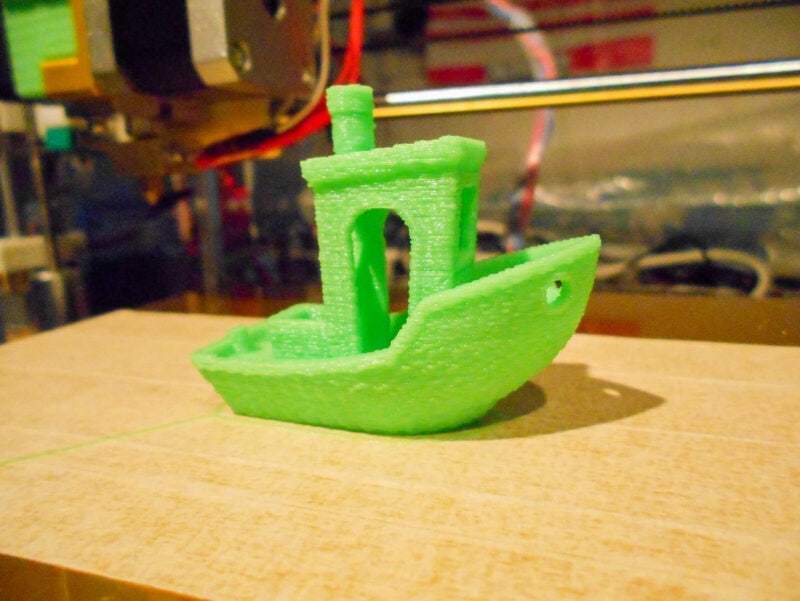
There are a few indicators that your filament has taken in too much moisture. If your print surface is full of air bubbles, pockmarks, gaps, and uneven extrusion, you are likely dealing with wet filament.
Listen closely during the 3D printing process. If you hear popping or sizzling noises coming from the hot end, your filament has too much moisture in it.
Another sign that your 3D printing filament is wet is brittleness. While filaments like PLA are naturally somewhat brittle, they become nearly unusable when they absorb moisture. Luckily, one of the things that help with brittle PLA is to dry it.
How to Dry Filament – All Methods
If you’re wondering how to dry filament, there are a few different ways to do it. While the most reliable method is to 3D printing-specific equipment like a filament dry box or a filament dryer, you can also use common household appliances like your kitchen oven or a food dehydrator with some success.
Oven

One common way to dry filament is to heat it in a conventional kitchen oven. This option is attractive to a lot of users who want a quick solution to their issue using what they already have on hand. However, results vary significantly with this method, and it takes a lot of experimentation to be able to dry whole spools this way.
Electric vs. Gas
You need to use an electric oven to dry out filament. Gas ovens produce moisture, so they are not suitable for this application. An electric oven with a convection setting is the best option, since the fan keeps the air circulating. This prevents hot spots in the oven and keeps the drying temperature even.
Temperature Accuracy
Most ovens are notoriously inaccurate. Their actual internal temperature is usually much different than the temperature you set them to. Their temperature also fluctuates significantly throughout the cooking process, since their method to come to temp is to initially heat up to a much higher temperature and then turn off to cool down.
While this doesn’t make much of a difference to those chicken thighs you’re cooking for dinner, it can lead to disastrous results when dealing with the small window of variation your 3D printer filament can tolerate.
For best results, use an oven thermometer or infrared thermometer to test the internal temperature in your oven. Let your oven run for a while before adding your filament to give the temperature time to stabilize. Put foil or a metal cookie tray between the filament and the heating element to protect it from the heat.
Food Safety
At the end of the day, your oven is primarily used to cook food. Most 3D printing materials are not food safe, and the dyes and polymers added to filament make them even less so.
While there has currently been no research into the effects of putting 3D printing filament in the oven, we do know that heat makes it easier for microplastics and chemicals to move into food, drinks, and ostensibly other surfaces they touch.

Since conventional oven temperatures are so unreliable, it is difficult to know with complete certainty that your filament does not exceed safe temperature ranges at any point. And beyond that, it’s nearly impossible to say what temperature ranges are safe when you consider not just the base material, but also the dyes, added materials, and possible contaminants present in the filament.
Unless you have a spare oven to dedicate to filament only, there is no safe way to ensure that no unsafe materials transfer to your cooking appliance.
Filament Dryer
Also known as drying boxes, filament dryers are special containers designed to protect 3D printer filament and remove moisture. While their functionalities vary between different models, there are a few basic types to consider.
Dry Boxes
For a low-tech and budget option, you can buy (or make) a dry box for storing your filament. These are basic airtight containers that keep your filament safe from humidity. Dry boxes usually use a desiccant such as silica gel packets to keep the inside dry, though some come with a hand pump to manually remove moisture through a built-in valve.
Users going the DIY dry box route often choose a plastic tote as their base since they’re cheap and can usually hold several spools at once. They are also easy to modify, so many users add small outlets for the filament strand. This allows them to keep their active spools out of the open air even as they are printing with them.
Bags
Another basic option for filament storage is vacuum-sealed bags. These are ideal for filament spools that you don’t plan to use for a while and are more space-efficient than plastic containers.
Most of them have a small valve to pump out the air. Paired with silica gel packets, these are an easy and effective way to keep your filament dry and free of contaminants.
Electronic Dryers
For a more functional option, you can opt for an electronic filament dryer. These typically have a display screen that shows the temperature and humidity levels inside the box. Others also have controls to let you set them to your desired levels.
A filament dryer is also an option for filament storage since you can run your spool through the drying process and then store it there when not in use. Most of them also come with outlets for the filament strand so you can keep your active filament dry in the electronic dryer environment.
Food Dehydrator
For users looking for a more reliable common household item than their oven for drying filament, a food dehydrator like this one is a much safer option. Designed to run at low temperatures for extended periods, a dehydrator is similar to an electronic filament dryer.
Dehydrators circulate their air for uniform heat distribution within the appliance. Unlike dedicated filament dryers, dehydrators are made for use with food. They have several plastic mesh trays that stack on top of each other to fit several layers of food while still allowing airflow between layers.
Some food dehydrator models are built with enough space between layers to fit the filament spool inside, while others need to be modified slightly. If you’re buying one specifically for filament drying, pay attention to the tray depths so you can find one that needs to least amount of modification to work.
They have many of the same issues as conventional ovens, so it can be difficult to figure out which settings give you the correct temperature. However, since they run at a low temperature anyway, they are much less likely to overcook your filament.
Remember that filaments release fumes, chemicals, and microplastic particles when heated. Just like the oven, you shouldn’t use it for food preparation after drying filament in it.
Filament Drying Times and Temperatures
To remove the moisture from a filament, you need to heat it slightly below its glass transition temperature, which is the point where a material transitions from a hard state to a soft state and loses its structure.
While polymers lose their rigidity at this stage, it is still a much lower temperature than their melting point. By drying filaments below their glass transition temperature, there’s little risk of deforming your filament.
Recommended Drying Temperature for Common Filament Types
We have listed the recommended drying temperature settings for popular filaments below. No matter if you dry PLA, dry nylon, dry PETG, or a different filament, it’s important to be conservative with the temperature.
Erring on the safe side with lower temperatures prevents accidentally melting your filament, especially if you are using a new filament dehydrator that you haven’t tested yet.
By drying your filament at a slightly lower temperature, it takes a bit longer for the water molecules to unbind from the filament’s polymer chains. But there’s no risk of any damage to the material.
| Material | Temperature | Drying Time |
|---|---|---|
| PLA | 45°C | 6 Hours |
| PVB | 45°C | 8 Hours |
| PETG | 55°C | 6 Hours |
| ASA | 80°C | 4 Hours |
| PC | 85°C | 5 Hours |
| PCCF | 95°C | 4 Hours |
| PA11CF | 90°C | 6 Hours |
| ABS | 80°C | 6 Hours |
| TPU | 45°C | 5 Hours |
| Nylon | 80°C | 6 Hours |
Best Practices for Preventing Wet Filament
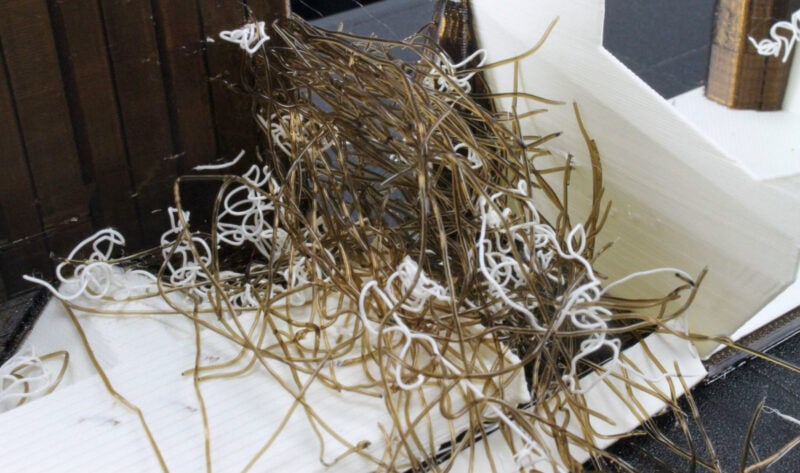
To keep 3D printing filament from absorbing moisture, you should store them according to the manufacturer’s instructions. If you don’t plan to use your whole filament spool within a few months, you should store them in resealable vacuum bags or an airtight container with a desiccant material between uses.
If you plan to store your filament spools long-term, replace the silica gel every few months for the best results. Keep unopened spools and dry boxes in a cool, dry place and out of direct sunlight.
Some users like to put their new filament roll directly into a filament dryer for a few hours before printing with it the first time. This can prevent any moisture problems from interfering with the print quality in case the filament absorbed any moisture during the manufacturing or packing process.
Some filament types absorb more water molecules than others. While PLA filament is the material that is most often cited as a hygroscopic filament, it tends to make good-quality prints even when it’s exposed to the elements. Materials like PETG and TPU can be far more sensitive to moisture and can have serious print quality issues without proper storage.
What Is the Easiest Way to Dry Filaments?
While there are many methods for drying wet filament, using a dedicated filament dryer is by far the easiest. Because filament dryers are designed for use with 3D printing materials, they produce the most consistent results. The settings are more consistent, so you can set the right temperature for drying without needing to worry about your filament overheating.
Many of them also work as a long-term solution for filament storage, so you can add desiccant packs after drying the filament and leave it there for as long as you need. Food dehydrators are a good second option.
Can You Dry a Filament Spool in Sunlight?
You should not try to dry filament in the sun. Sunlight does not get hot enough to remove the moisture, and your filament will most likely absorb even more water while sitting out in the open.
Many materials used for 3D printing are UV sensitive. Dry your filament in direct sunlight for extended periods of time and you can degrade it further and potentially make it unsalvageable.
Final Thoughts on Drying Filament
No matter what material you put through your 3D printer the most, it absorbs moisture to some degree. Once your filament gets wet, you can either toss it, fix it, or power through the pain. Thankfully, filament drying is a fairly straightforward process, especially when you use the right tools.
We recommend investing in a filament dryer. It works with everything from PLA to Nylon to ABS filament and gives you the best results. Using household appliances like your oven or a food dehydrator is hit-and-miss. Plus, it’s pretty much always best practice to keep your food utensils and your melting plastics separate.
Keeping filament dry from the start takes less work than dealing with food dehydrators or your oven’s thermostat, so storing your filament properly is key. Keeping a spool inside a dry environment at the right temperature goes a long way.
Have you dried any filaments lately? Let us know how it turned out in the comments!
